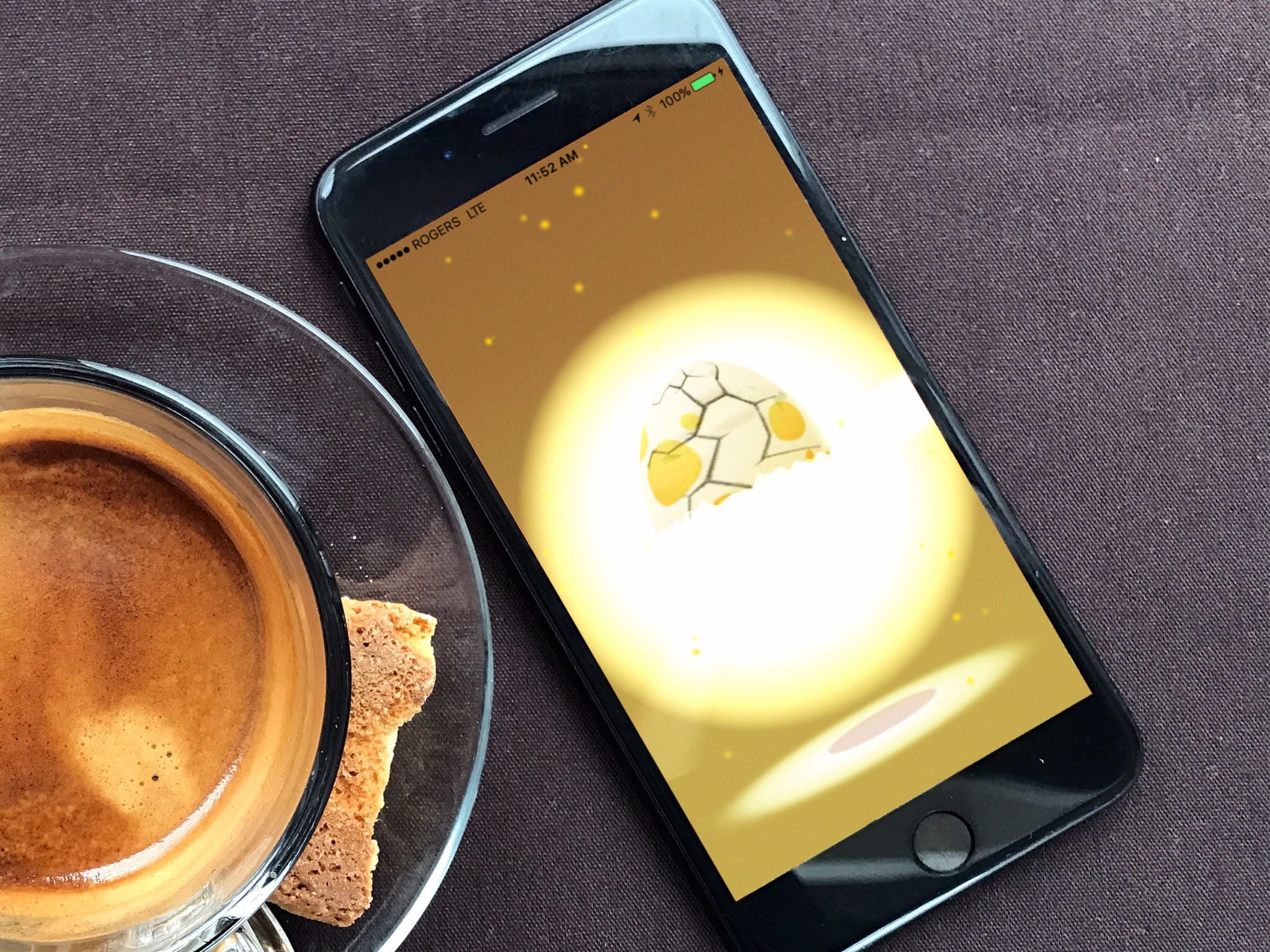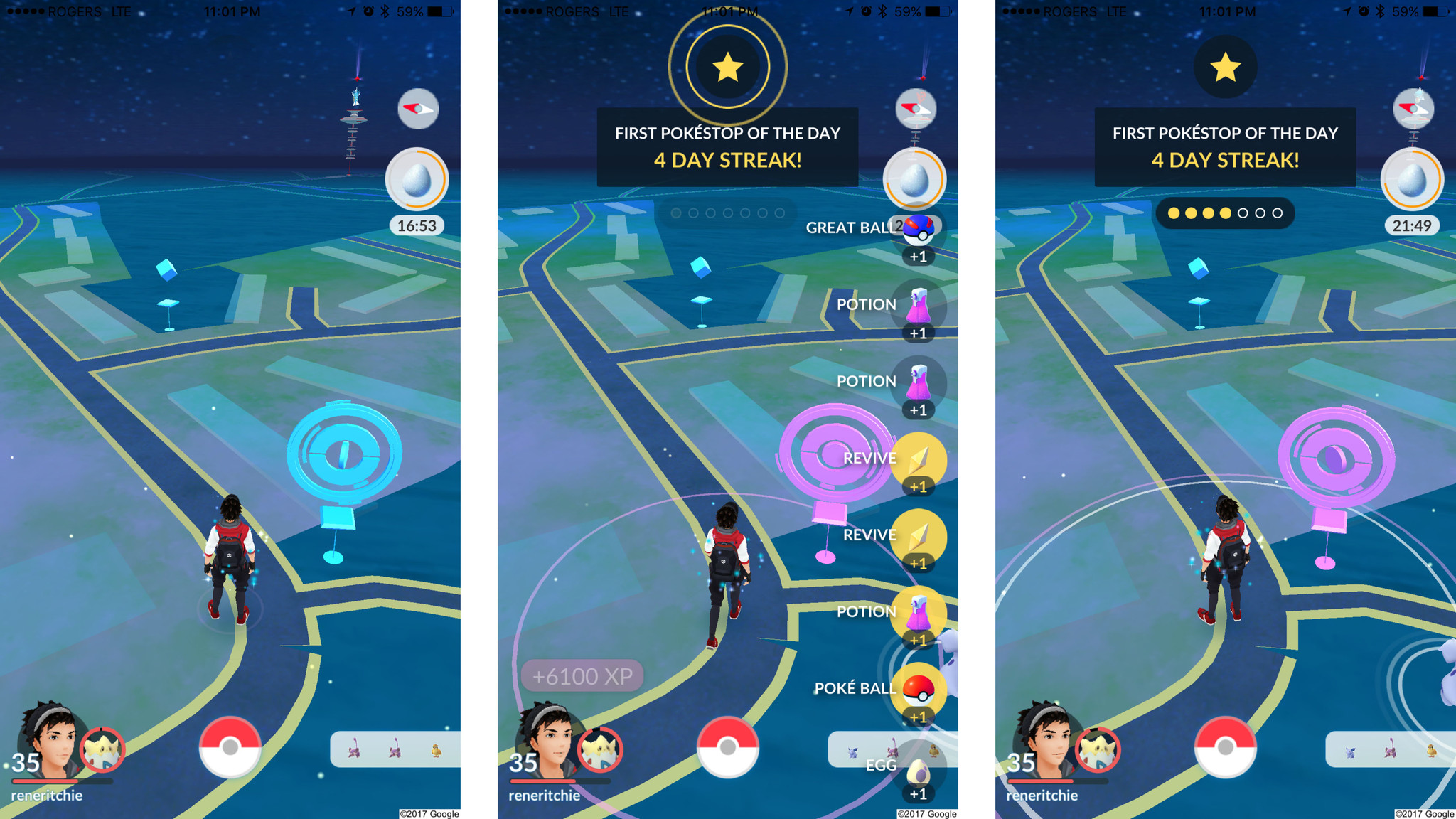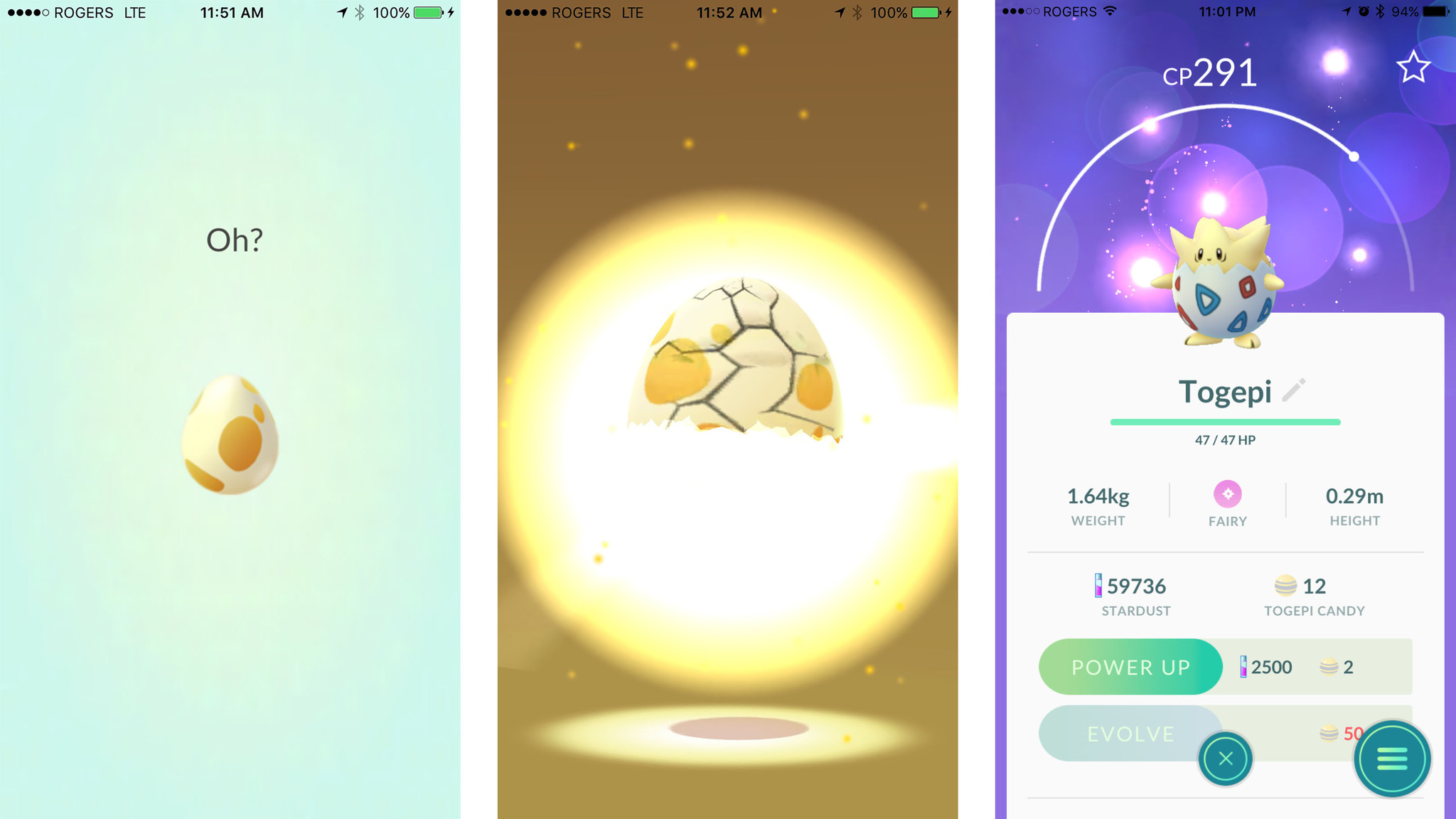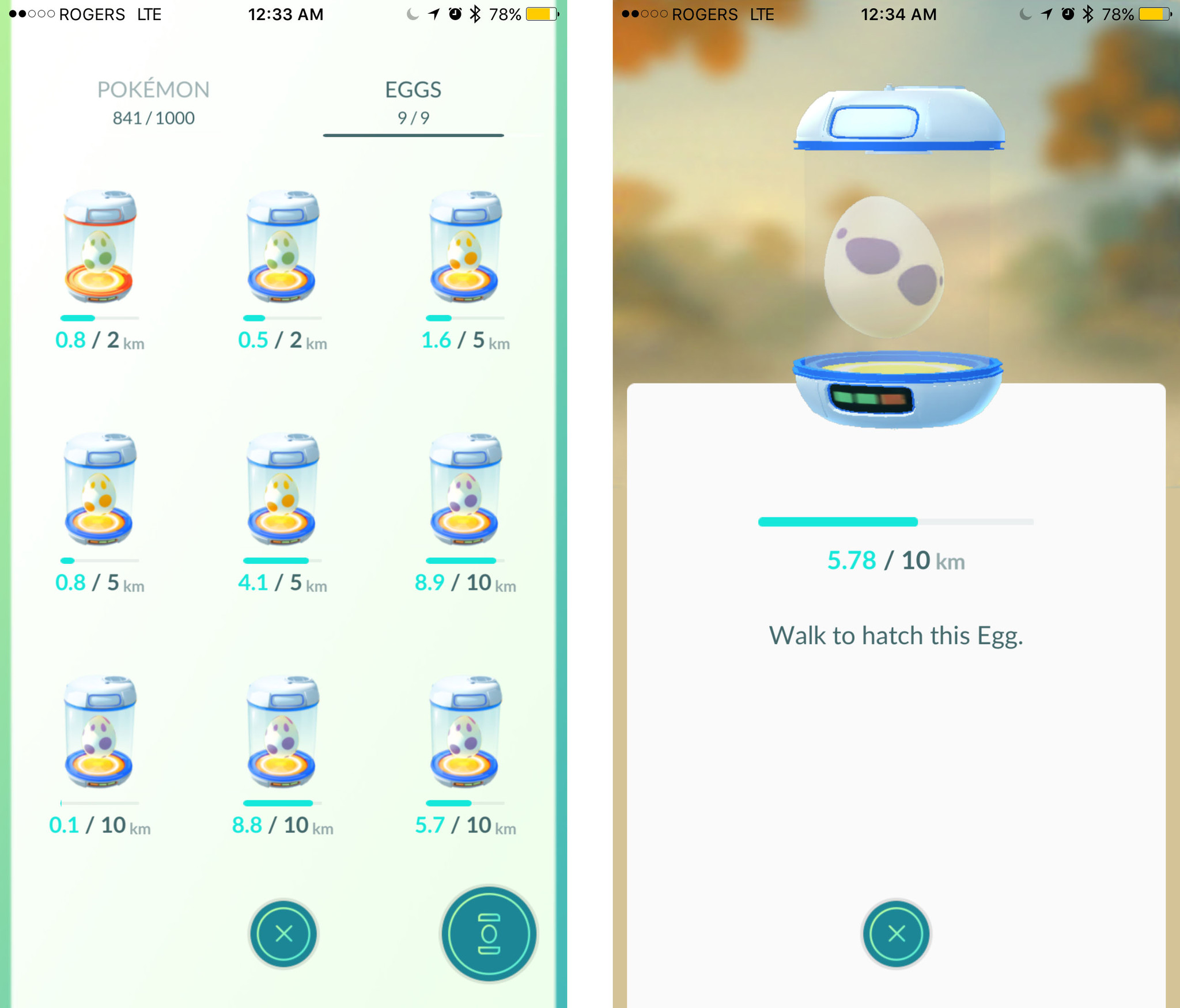Which Pokémon can you hatch from 10 KM, 7 KM, 5 KM, and 2 KM Eggs? And what are the odds of hatching them? Here's the answer!
Pokémon Go isn't just about catching — hatching is a big part of the game as well. You get Pokémon Go eggs from spinning Pokéstops and from friend Gifts, incubate them, walk them for 2 KM, 5 KM, 7 KM, or 10 KM, and then hatch Pokémon from the common to the hyper-rare. Which Pokémon are in which Pokémon Eggs? And what's the best — read: fastest! — way to hatch them? Here's the updated list along with some tips and tricks — and maybe a cheat or two!
What kind of Pokémon Eggs are there in Pokémon Go?
Aside from the very different Lucky Eggs, available in the Shop, there are six kinds of Pokémon Eggs in Pokémon Go:
- 2 KM Eggs with green spots.
- 5 KM Eggs (standard) with yellow spots.
- 5 KM Eggs* (Weekly Fitness 25 KM) with purple spots.
- 7 KM Eggs that are yellow with pink spots
- 10 KM Eggs (standard) with purple spots.
- 10 KM Eggs* (Weekly Fitness 50 KM) with purple spots.
Each type of Pokémon Egg can hatch different kinds of Pokémon and the potential Pokémon change periodically, along with the rates at which they hatch.
- Weekly Fitness reward Eggs are visually identical to the standard 5 KM and 10 KM Eggs received from Pokéstops but have a much smaller pool of potential Pokémon.
What are the rarity tiers for Pokémon Eggs in Pokémon Go?
After documenting 5,945 Pokémon Egg hatches since Halloween, The Silph Road shares:
Egg species is determined according to hidden rarity 'tiers' that are not the same as the egg distance tiers (i.e., 2 km, 5 km, 7 km, 10 km).
In simple English, this means that not all 10 km egg species are rarer than 2 km egg species or 5 km egg species. A simple example of this is that Dratini is presently a very common hatch, despite being in 10 km eggs. It is currently easier to acquire a 10 km egg with a Dratini inside than a 2 km egg with a Machop inside.
The tiers seem to suggest that there's a 1:2:4:8 ratio for the tiers. That means you are 2x as likely to get a common egg as an uncommon one, 2x as likely to get an uncommon egg as a rare egg, and 2x as likely to get a rare egg as an ultra-rare egg.
While the rarity tiers do seem to apply to all Eggs retrieved from Pokéstops, the Weekly Fitness reward Eggs appear to have an equal chance of hatching any of the six Pokémon they can contain.
What kind of Pokémon hatch from each type of Egg?
Please note that any Pokémon marked with an asterisk * has the potential to be shiny.
As of October 2019, the following Pokemon can be found in each tier of eggs in Pokemon GO:
2 KM Eggs
- Magikarp*
- Wailmer*
- Swablu*
- Luvdisc*
- Turtwig*
- Chimchar*
- Piplup*
- Snivy
- Tepig
- Oshawott
- Patrat*
- Lillipup*
- Purloin
- Venipede
- Dwebble
5 KM Eggs
- Ponyta*
- Farfetch'd* (Asia only)
- Grimer*
- Cubone*
- Kangaskhan* (Australia)
- Scyther*
- Pinsir*
- Tauros* (North America)
- Eevee*
- Gligar*
- Heracross (South America, Central America, Mexico, and southern Florida and Texas)
- Corsola (Around the equator)
- Skarmory*
- Volbeat (Europe, Asia, and Australia)
- Illumise (North America, South America, Africa)
- Carvanha*
- Torkoal (Western/Southeast Asia)
- Zangoose* (Europe, Asia, and Australia)
- Seviper* (North America, South America, and Africa)
- Lunatone* (Europe, Asia, and Australia)
- Solrock* (North America, South America, and Africa)
- Lileep*
- Anorith*
- Tropius (Africa, Middle East, and the Mediterranean)
- Clamperl*
- Relicanth (New Zealand, Fiji, Vanuatu, and New Caledonia)
- Burmy*
- Pachirisu (Canada, Russia, and Alaska)
- Buizel
- Cherubi
- Mime Jr.* (Europe)
- Chatot (Southern Hemisphere)
- Skorupi
- Croagunk
- Carnivine (Southeast US)
- Pansage (Asia, and the Pacific)
- Pansear (Europe, the Middle East, Africa and India)
- Panpour (Americas and Greenland)
- Roggenrola
- Tympole
- Maractus (Southern United States, Mexico, Central America, the Caribbean, and South America only)
- Trubbish
- Karrablast
- Joltik
- Shelmet
- Heatmor (Western Hemisphere)
- Durrant (Eastern Hemisphere)
7 KM Eggs
- Sandshrew* (Alola Form)
- Vulpix* (Alola Form)
- Diglett* (Alola Form)
- Meowth* (Alola Form)
- Geodude* (Alola Form)
- Grimer* (Alola Form)
- Pichu*
- Cleffa*
- Igglybuff*
- Togepi*
- Tyrogue
- Smoochum*
- Elekid*
- Magby*
- Azurill*
- Wynaut*
- Budew*
- Chingling
- Bonsly*
- Happiny
- Munchlax
- Riolu
- Mantyke
10 KM Eggs
- Mawile*
- Feebas*
- Absol*
- Shinx*
- Cranidos
- Shieldon
- Gible*
- Timburr
- Throh
- Sawk
- Sigilyph (Egypt and Greece)
- Tirtouga
- Archen
- Ferroseed
- Klink*
- Litwick
- Axew
- Golett
- Deino
Weekly fitness 10 KM Eggs
25 KM:
- Combee
- Buizel
- Bronzor*
- Croagunk
- Finneon
- Snover
50 KM:
- Dratini*
- Larvitar*
- Bagon*
- Beldum*
- Shinx*
- Riolu
How do you get a Pokémon Egg?
Pokémon Eggs are different than the Lucky Eggs you get when you reach a significant new level or buy at the Shop. You can't buy Pokémon Eggs at all. You have to collect them at PokéStops, receive them in Gifts from friends, or received them as rewards for meeting Weekly Fitness goals. Spin a stop when you have space for an egg, and there's a roughly 20% chance you'll get a Pokémon Egg along with the more common balls, potions, and revives.
That doesn't mean you'll get one egg every five stops, though. Random is random, which means you could get five eggs in a row or none at all. If you keep visiting and spinning Pokéstops, though, you'll eventually get Pokémon Eggs.
7 KM eggs are not available at Pokéstops. Instead, you get them by opening Gifts send to you by friends. Be sure to open lots of Gifts if you're after Pokémon found in 7 KM eggs, though if you're tired of the same Pokémon over and over, you may want to either hold off on opening Gifts for a while or make sure your Eggs are full before you open them.
As of February 2019, Pokémon Go has also begun awarding special 5 KM and 10 KM Eggs for completing Weekly Fitness goals through Adventure Sync. If you walk 25 KM in a single week, you will be rewarded a 5 KM Egg. If you walk 50 KM in a week, you will be rewarded with a 10 KM Egg. Unlike 5 KM and 10 KM Eggs retrieved from Pokéstops, these special Eggs only have six potential Pokémon, each with the same chance of hatching.
More recently, players discovered another tier reward for weekly fitness. If you walk 100 KM or more in a week, you will be rewarded with both a special 5 KM egg and a special 10 KM egg.
New to Pokemon Go? Check out our ultimate guide first!
Where do you see Pokémon Eggs when you get them?
Pokémon Eggs are hidden away, but once you know where they are, you can check on which ones you have, and how many, at any time.
- Tap the PokéBall button to bring up the menu.
- Tap the Pokémon button.
- Swipe from right to left to see your Pokémon Eggs.
You can have up to 9 Pokémon Eggs at any one time, so make sure you have space for Eggs before attempting to get another. This is especially important if you are collecting your Weekly Rewards (If you've managed to walk 50 KM in a week, you definitely don't want to miss out on a potential Egg just because you already had 9 Eggs!)
How can you tell which exact Pokémon is in an Egg?
You can't. Not until you hatch it. While Pokémon Go determines what you're getting in an Egg the moment the Egg is granted, until that Egg hatches, there is no way to tell for sure what is inside.
That means it doesn't matter where you are or what you do after you get an Egg. What's inside is already decided. It's also why, when Pokémon Go makes a change to Eggs for an event or any other reason, it won't affect Eggs you already have, only ones you get from that point on. This is especially important for players trying to hatch Regional Pokémon from Eggs. If you don't pick up the Egg in the particular region where that Pokémon can be found, it cannot be in the Egg.
Okay, how do you hatch a Pokémon Egg?
You hatch your Pokémon Eggs by placing them in Incubators and then walking around until you reach the number of kilometers indicated by the Egg.
Everyone gets one free "Infinite" Incubator that lets you incubate a single Pokémon Go at a time. Pokémon Go will also give you free three-use Incubators when you reach level 6, 10, 15, 20, 25, and 30, and four free when you reach level 40. To use them:
- Go to your Pokémon Egg screen.
- Tap on the Pokémon Egg you want to Incubate.
- Tap on Start Incubation.
- Tap on the Incubator you want to use.
You can also buy additional three-use Incubators from the Shop. They cost 150 Pokécoins and break after you've used them three times, but let you incubate as many Eggs as you have, all at the same time.
- Tap the Incubator button at the bottom right.
- Tap on the Shopping Bag button at the bottom right.
- Tap on the Incubator button.
- Tap on the Exchange For (150 coins) button.
You can also buy them from the Store screen if you're not already on the Egg screen. And you can buy as many as you like simply by tapping the Exchange For button repeatedly. (As long as you have enough Pokécoins.)
- Tap the PokéBall button to bring up the menu.
- Tap the Shop button.
- Tap on the Incubator button.
- Tap on the Exchange For (150 coins) button.
There is also a Super Incubator available for sale for 200 Pokecoins in the Shop with a 1.5x hatch rate, so your eggs will hatch 50% faster. Like the regular Incubator, it comes with three charges.
Both three-use Incubators and Super Incubators often show up in special Boxes for discounted rates. Not every Box is a huge bargain, and your particular needs as a player will determine if a Box is a good buy. If you happen to have the extra Pokécoins to spend, check to see what each Box contains instead of just buying individual Incubators.
Once you have the Pokémon Egg in the Incubator, you need to walk to hatch it. How far you have to walk correlates to the distance of the Egg you have.
- 2 kilometers for 2 KM Eggs (green).
- 5 kilometers for 5 KM Eggs (yellow).
- 7 kilometers for 7 KM Eggs (yellow with pink spots)
- 10 kilometers for 10 KM Eggs (purple).
Some events may reduce the amount of distance you have to walk to hatch an egg. You can view the remaining distance to travel from the Eggs screen. If you notice an event with a shorter distance for egg hatching, be sure to get walking and hatch as many as you can!
Does it matter what type of Incubator you use for every kind of egg?
Any Incubator can be used to hatch any Pokémon Egg. That said, if you want the most from your Incubators:
- Put 2 KM eggs in your unlimited use Incubator first.
- Put 10 km eggs in your three-use Incubators first.
- If you have Super Incubators, use your 10 KM eggs on those first.
Look at it this way: If you have a 3-use Incubator and you use it for 2 km eggs, it'll disappear after 6 km. If you use it for 10 km eggs, you'll get 30 km out of it, or 5x the distance for your money.
Can you see how far you've traveled with a Pokémon Go Egg?
Yup! As you walk, the Pokémon Egg screen will update to show you the distance you've walked each Egg up to one decimal place. For example, if you walk 1.3 KM, you'll see 1.3 / 2 KM, 1.3 / 5 KM, or 1.3 / 10 KM.
If you tap on a Pokémon Egg, you can see the distance up to two decimal places.
The distance is updated every few minutes so, don't worry if you walk for a bit and don't see any immediate changes.
How fast can you walk to hatch a Pokémon Egg?
It's currently believed the optimal speed for hatching a Pokémon Go is 10.5 KM/H (6.5 M/H). Go slower, and it'll just take you longer to hatch. Go faster, and Pokémon Go will discount the distance you're traveling or, if you go fast enough, ignore it altogether.
If you reach 35 KM/H (22 MP/H), you'll get the speed-lock popup. At that point, little if any of your distance will be counted.
Do you have to walk, or can you jog, run, cycle, skate, ski... or drive?
You can travel anyway you like, you just can't exceed 10.5 KM/H if you want all your distance to count, or 35 KM/H if you want anything to count at all.
If you've got a great way to go 10.5 KM/H, like on a scooter, skates, or cross-country skis, go for it!
Do you have to travel in a straight line?
Pokémon Go measures distance in a straight line based on the change in GPS position. So, to get maximum distance, you should travel in a straight line too.
It's believed that Pokémon Go actually records distance more frequently, though. Somewhere between one to four times a minute. So, you could theoretically change direction after a minute or so and still get good results.
Do you have to have Pokémon Go open while you're traveling?
Not anymore! With the implementation of Adventure Sync, you can now hatch eggs just by having your phone on your person and turned on, without Pokemon Go running. Go into the Settings menu and make sure Adventure Sync is turned on, and your game will track distance and prompt you to hatch eggs when you open the app next.
Do you get anything else from hatching an Egg?
Yes! You also get XP, Candies, and Stardust. XP is always the same; the distance you traveled times 100. So for a 2KM egg, you'll get 200 XP, a 5KM gives 500 XP, etc. You'll also receive Stardust (generally more the higher the KM egg it is), and between 5 and 40 Candies of the Pokemon, you hatch at random.
Any cheats to hatch Pokémon eggs faster?
There are, though, some can start or stop working depending on how Pokémon Go updates. They include ways to benefit from "GPS drift," ways to get more distance when you're driving, and more.
Your Pokémon Go Egg hatching tips?
Do you have any tips, tricks, or cheats for hatching Eggs in Pokémon Go? Drop them into the comments, and we'll try them out.
Here are the latest changes to Pokémon Go Eggs examined and explained! posted first on http://bestpricesmartphones.blogspot.com








No comments:
Post a Comment